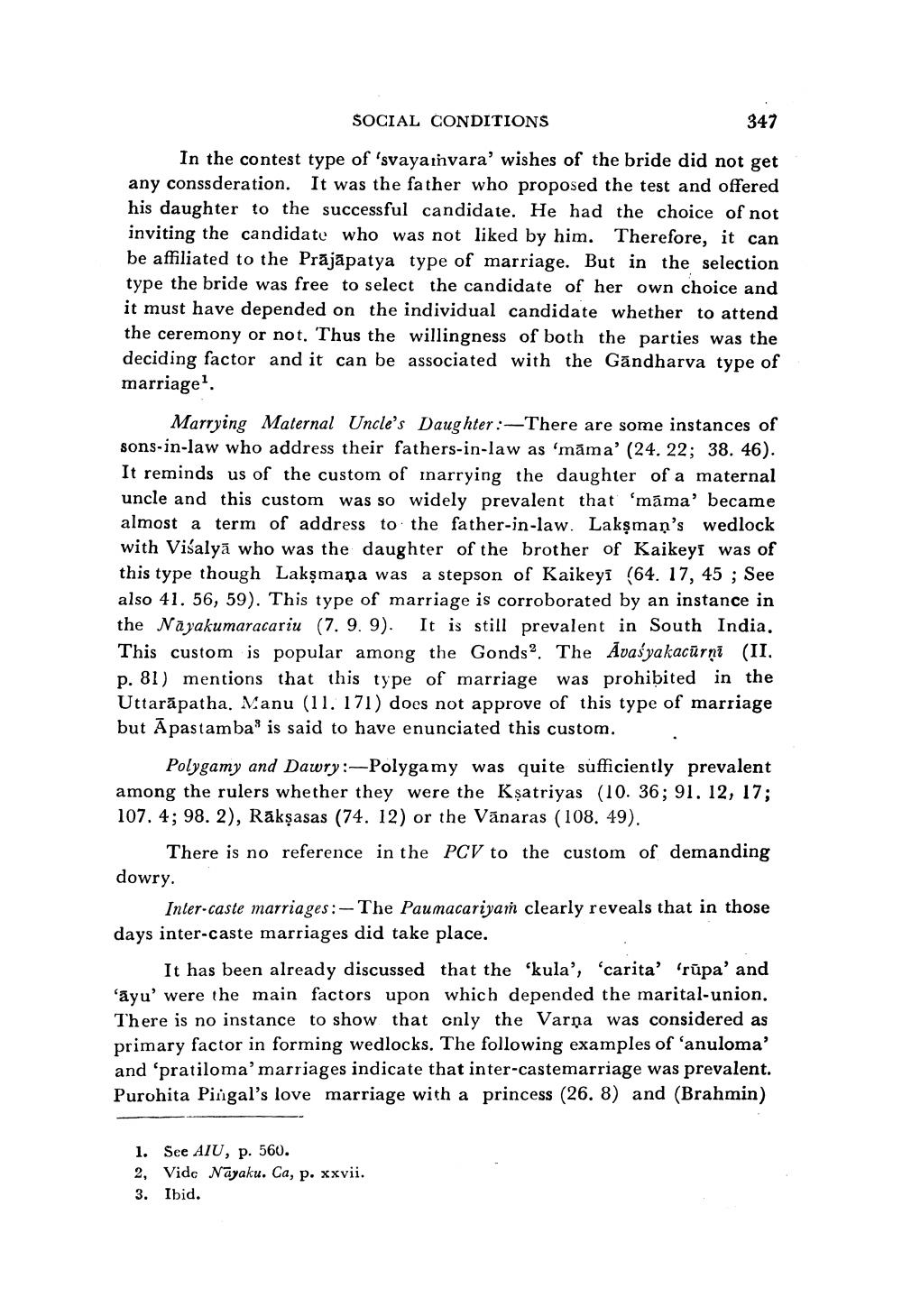________________
SOCIAL CONDITIONS
347
In the contest type of 'svayaınvara' wishes of the bride did not get any conssderation. It was the father who proposed the test and offered his daughter to the successful candidate. He had the choice of not inviting the candidate who was not liked by him. Therefore, it can be affiliated to the Prājāpatya type of marriage. But in the selection type the bride was free to select the candidate of her own choice and it must have depended on the individual candidate whether to attend the ceremony or not. Thus the willingness of both the parties was the deciding factor and it can be associated with the Gandharva type of marriage!
Marrying Maternal Uncle's Daughter :--There are some instances of sons-in-law who address their fathers-in-law as 'māma' (24. 22; 38. 46). It reminds us of the custom of inarrying the daughter of a maternal uncle and this custom was so widely prevalent that 'mama' became almost a term of address to the father-in-law. Lakşman's wedlock with Višalyā who was the daughter of the brother of Kaikeyi was of this type though Lakşmana was a stepson of Kaikeyi (64. 17, 45 ; See also 41. 56, 59). This type of marriage is corroborated by an instance in the Nayakumaracariu (7. 9. 9). It is still prevalent in South India. This custom is popular among the Gonds. The Avašyakacūrnī (II. p. 81) mentions that this type of marriage was prohibited in the Uttarăpatha. Manu (11. 171) does not approve of this type of marriage but Āpastambais said to have enunciated this custom.
Polygamy and Dawry:- Polygamy was quite sufficiently prevalent among the rulers whether they were the Ksatriyas (10.36; 91. 12, 17; 107. 4; 98. 2), Rākşasas (74. 12) or the Vānaras (108. 49).
There is no reference in the PCV to the custom of demanding dowry.
Inter-caste marriages: - The Paumacariyaṁ clearly reveals that in those days inter-caste marriages did take place.
It has been already discussed that the 'kula', 'carita' (rūpa' and ayu' were the main factors upon which depended the marital-union. There is no instance to show that cnly the Varna was considered as primary factor in forming wedlocks. The following examples of 'anuloma' and 'pratiloma'marriages indicate that inter-castemarriage was prevalent. Purohita Pingal's love marriage with a princess (26. 8) and (Brahmin)
1. See AIU, p. 560. 2, Vidc Nayaku. Ca, p. xxvii. 3. Ibid.




